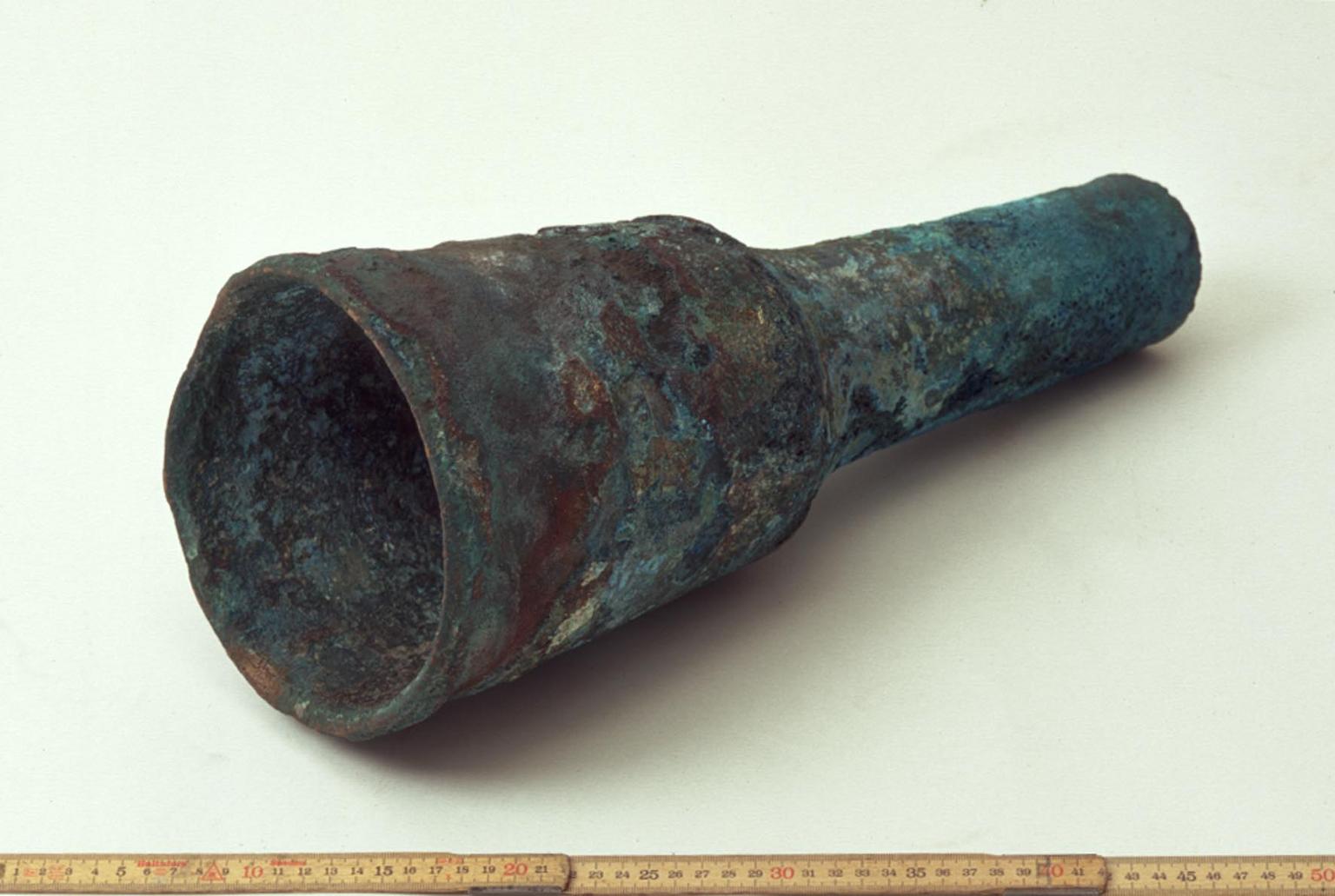A bronze cannon found on the seafloor off Marstrand, Sweden, has been dated to the 14th century, making it the oldest know shipboard cannon in Europe.
The cast copper-alloy cannon was found in the open sea at a depth of about 65 feet by a recreational scuba diver in the summer of 2001. He did not immediately realize that the small, funnel-shaped object less than 19 inches long was an archaeological artifact. When he cottoned on, he reported his find to museum experts. It was expropriated as state property, conserved and entered the collection of the regional Bohuslans museum.
The shipwreck it came from was never found (conditions at the site are not conducive to the long-term survival of wood), but the gun itself surprisingly preserved a key piece of information: a piece of cloth stuck to the inner wall of the powder chamber by copper corrosion materials. It was the remains of a cartouche that held the powder charge. The textile fragment suggests it was loaded and ready to fire when it sank under the waves, which it would not have been if it was cargo rather than ship’s armament.
This bit of cloth made it possible to radiocarbon date the gun, a rare opportunity with early artillery that is sparsely documented and cannot be accurately dated by type. With calibrated results in the range of 1285-1399, it is one of the oldest pieces of European artillery ever to be absolutely dated. Cannons of the Marstrand type were previously thought to date the 15th-16th centuries, as were powder cartouches. This one discovery has redefined the timeline for European ship artillery.
A recent multi-disciplinary study documented the cannon with 3D scanning and analyzed the metal. The team found it was made with a copper alloy containing 14% lead, a high amount that would have made the gun prone to breakage with intensive usage.
“Clearly, the person who cast the cannon did not have the necessary knowledge and understanding of the properties of various copper alloys,” says Staffan von Arbin.
“This shows that the noble art of cannon casting had not yet been fully mastered at that time, and that production was largely based on trial and error.”
The analysis also indicates that the copper ore used in the cannon’s production was mined in present-day Slovakia, while the lead probably came from England or the border region between Poland and the Czech Republic. […]
The new types of firearms developed at this time provided great tactical advantages in battles at sea. But it wasn’t just warships that were armed – during the late Middle Ages merchant ships also started being equipped with cannon more and more often to defend themselves against pirates and other hostile vessels. The study of the Marstrand cannon provides new knowledge and perspectives on the development of this military technology.
The study has been published in the journal The Mariner’s Mirror and can be read in its entirety here.

This is probably a translation issue but the term in English is usually “cartridge” rather than “cartouche” which is a French word meaning the same thing, a bag cotaining a premeasured amoun of gun powder for faster loading. In early artillery cartridges were fairly uncommon with it being more common to ladle in powder from a loose box or barrel of powder. Also, early gunpowder had loose ingredients, charcoal, saltpeter, sulfur, which could separate out from movement (like on a ship). Corned powder which was mixed wet and then ground didn’t become common until the 16th century.
This cannon was likely an anti-personnel weapon firing numerous projectiles likea shot gun rather than one solid cannon ball. Medieval sea battles were more like a land battle on water with the main tactic being boarding the enemy rather than trying to sink ships. This wepon would have been used to defend against boarders or to clear the way fora boarding party.
Absolutely astonishing that a piece of cloth could survive under those conditions for so long!
This is such a great blog! Thank you for writing it!